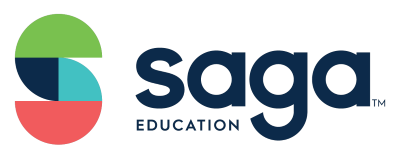According to the National Student Support Accelerator (NSSA), “high-impact tutoring is built into the school day and engages teachers.” The NSSA recommends that districts “set aside time and capacity for logistics, building stakeholder investment, and supporting school-level implementation.”
Planning and logistics can be challenging in the midst of the high demands of school districts, and schools need to consider what is right for their own students. “Scheduling tutoring works differently for the different grade levels. There’s no simple formula that suits all schools and all students, but Saga Education is a good partner when it comes to rethinking how schools can manage scheduling students, and how these classes are categorized,” said Vice President for District Partnerships at Saga Education, Maryellen Leneghan.

Here’s a quick breakdown of how different grade levels can begin to approach tutoring during the school day.
High School
In high schools, high-impact tutoring can be scheduled as an elective course, a double-blocked content-area course, an intervention period, or an additional core course for credit.
Middle School
Flexibility can be built into middle school tutoring programs by grouping students who travel together to each class.
Elementary School
When it comes to elementary students, focus on small groups during independent work time to allow for teachers and tutors to support small group interventions,
Ratio
Research shows that tutoring works in a ratio of one tutor to every three students. U.S Secretary of Education Miguel Carbona has expressed support for this tutoring model.
Partner with Saga
With school districts experiencing limited capacity and resources, and trying to address the lingering effects and learning losses from the pandemic, it can be hard for schools to step back and try to plan and coordinate tutoring services.
“Saga can provide districts with the resources and support they need to build up their capacity to make these changes,” said Leneghan. “We can offer districts consulting services through technical assistance and quality assurance to help high-impact tutoring programs succeed,” she said.
Read more about how to design high-impact tutoring programs.
